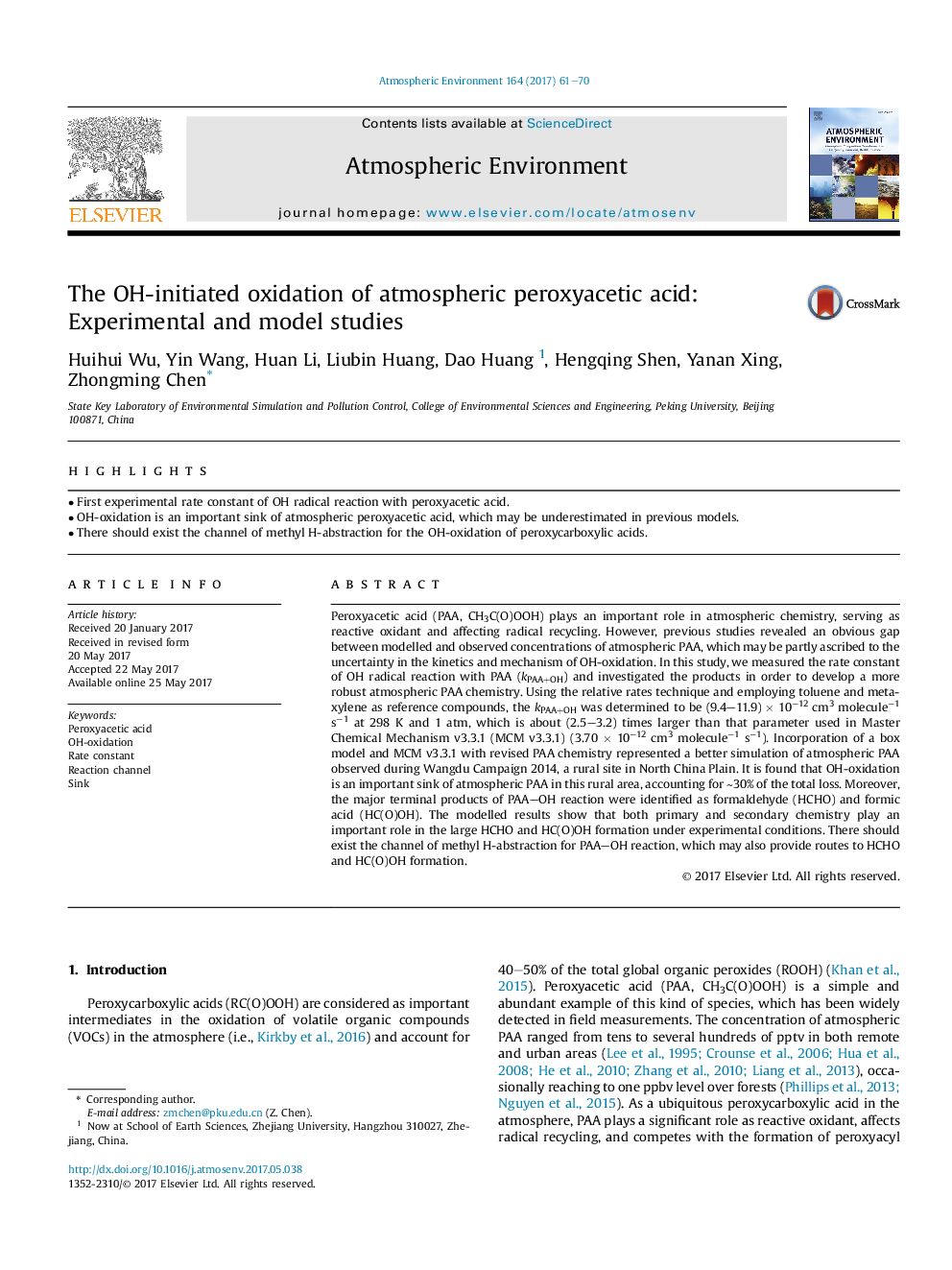| Article ID | Journal | Published Year | Pages | File Type |
|---|---|---|---|---|
| 5753112 | Atmospheric Environment | 2017 | 10 Pages |
Abstract
Peroxyacetic acid (PAA, CH3C(O)OOH) plays an important role in atmospheric chemistry, serving as reactive oxidant and affecting radical recycling. However, previous studies revealed an obvious gap between modelled and observed concentrations of atmospheric PAA, which may be partly ascribed to the uncertainty in the kinetics and mechanism of OH-oxidation. In this study, we measured the rate constant of OH radical reaction with PAA (kPAA+OH) and investigated the products in order to develop a more robust atmospheric PAA chemistry. Using the relative rates technique and employing toluene and meta-xylene as reference compounds, the kPAA+OH was determined to be (9.4-11.9)Â ÃÂ 10â12Â cm3 moleculeâ1 sâ1 at 298Â K and 1Â atm, which is about (2.5-3.2) times larger than that parameter used in Master Chemical Mechanism v3.3.1 (MCM v3.3.1) (3.70Â ÃÂ 10â12Â cm3 moleculeâ1 sâ1). Incorporation of a box model and MCM v3.3.1 with revised PAA chemistry represented a better simulation of atmospheric PAA observed during Wangdu Campaign 2014, a rural site in North China Plain. It is found that OH-oxidation is an important sink of atmospheric PAA in this rural area, accounting for â¼30% of the total loss. Moreover, the major terminal products of PAA-OH reaction were identified as formaldehyde (HCHO) and formic acid (HC(O)OH). The modelled results show that both primary and secondary chemistry play an important role in the large HCHO and HC(O)OH formation under experimental conditions. There should exist the channel of methyl H-abstraction for PAA-OH reaction, which may also provide routes to HCHO and HC(O)OH formation.
Related Topics
Physical Sciences and Engineering
Earth and Planetary Sciences
Atmospheric Science
Authors
Huihui Wu, Yin Wang, Huan Li, Liubin Huang, Dao Huang, Hengqing Shen, Yanan Xing, Zhongming Chen,
